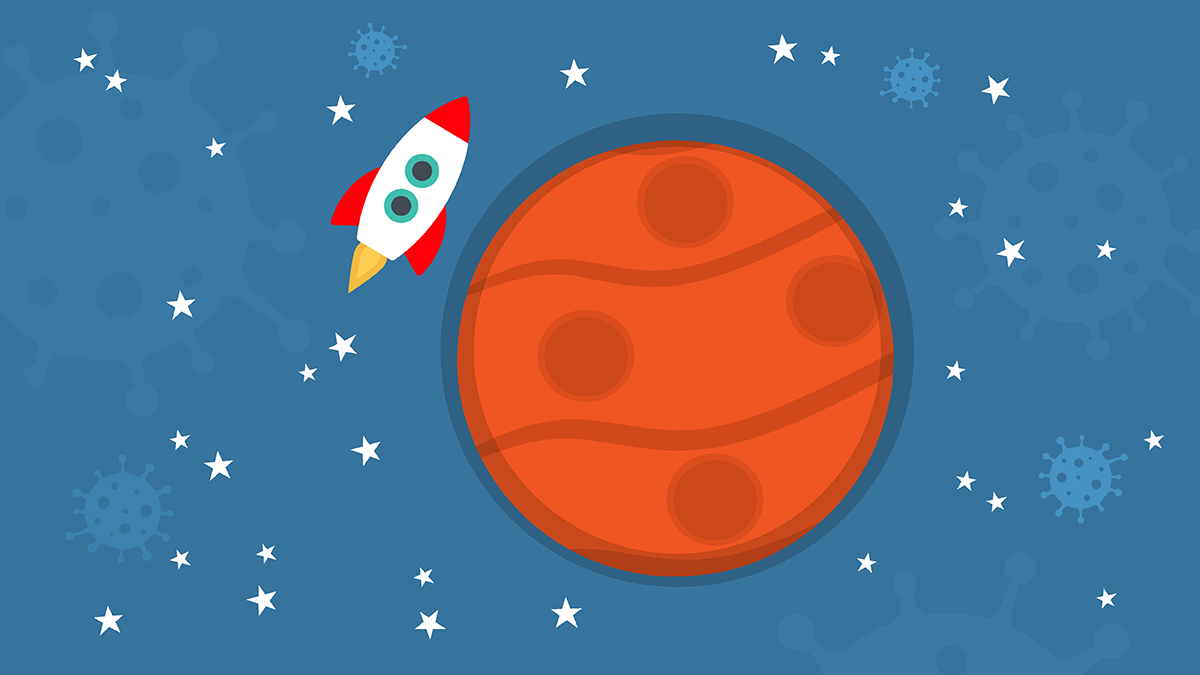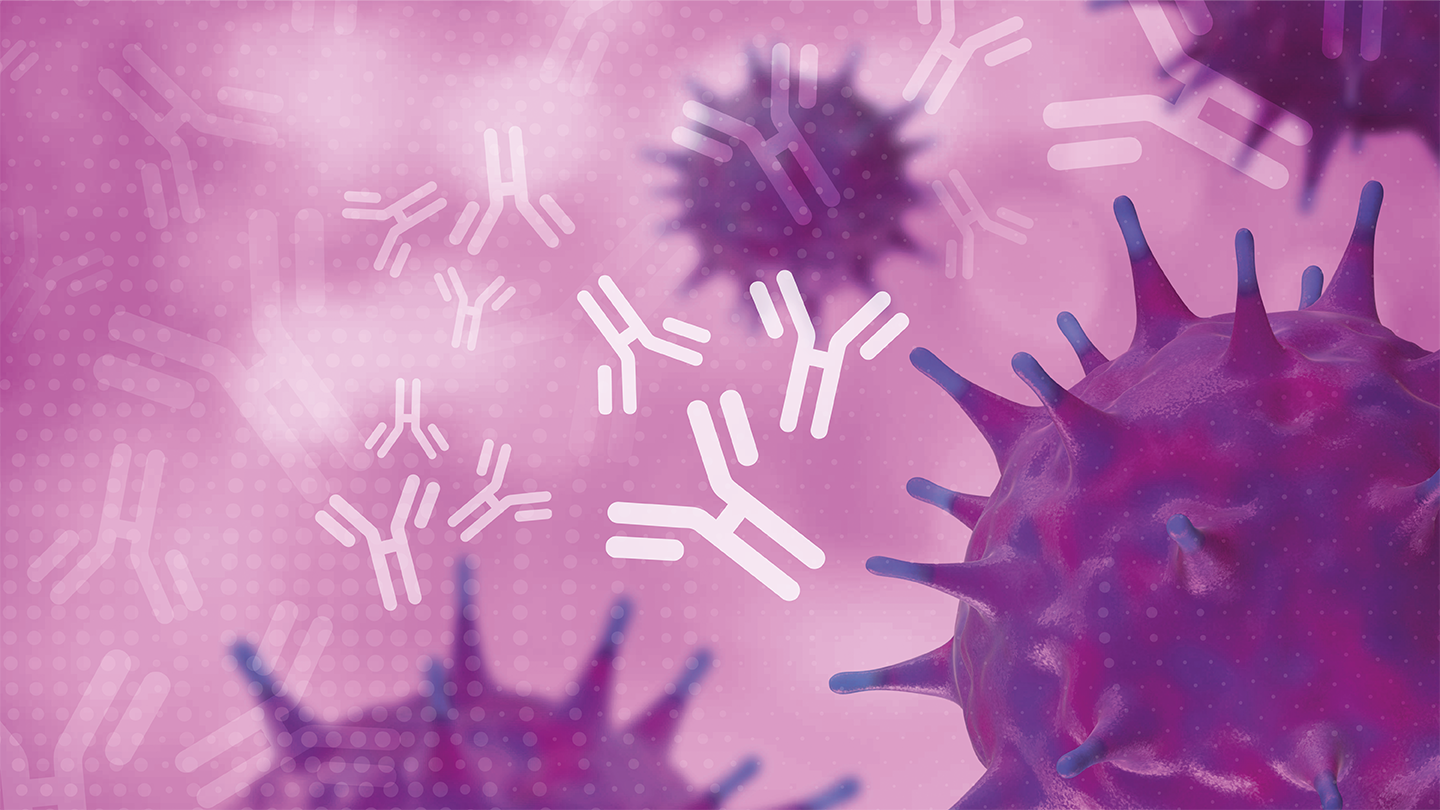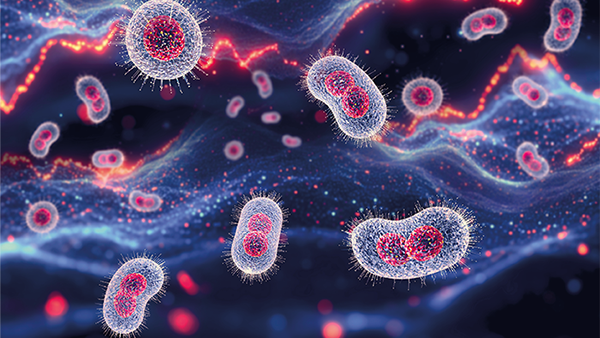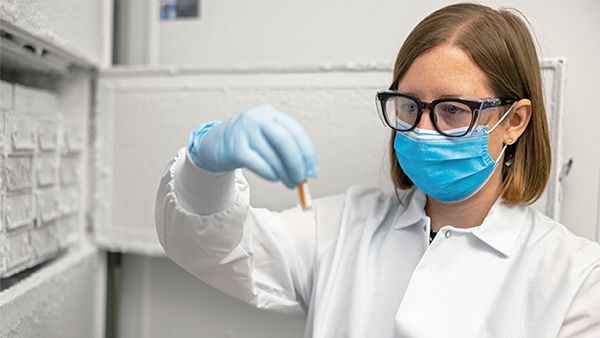The Final Frontier
What do we know about viruses in space – and what is left to explore?
As space exploration increases in scope, ambition, and the number of missions, scientists are keen to understand more about what threats could lie up there – as well as what pathogens astronauts may take with them in spaceflight. How does our immune system change during spaceflight? How does infection differ in space compared with here on Earth? And what happens when an outbreak occurs among a space crew?
We posed these questions (and more) to Bruno Pavletić – a doctoral student at the Institute of Aerospace Medicine, DLR Cologne.
What are the key challenges and concerns associated with viral threats in space?
There are many challenges concerning microbial threats in spaceflight, including viruses. We have no satisfactory understanding of the viral diversity in, for example, the International Space Station, which makes it hard to say what kind of viruses might pose a threat to crew health and how to get rid of them. I think our understanding will continue to grow, mostly due to the incorporation of on-site nanopore sequencing that allows real-time microbial monitoring. Still, the viral universe of space stations is a big mystery waiting to be explored – mostly because of the limited amount of DNA and RNA you get from the space station environment and also because our methods of detection have been focused on bacteria.
Additionally, we now know that reactivation of herpesviruses poses a long-term threat for spaceflight. It is estimated that up to 90 percent of the human population is infected with herpesviruses – and so are most astronauts. These viruses reactivate when our immune system weakens. In astronauts, this weakening happens due to all the stresses of spaceflight – extreme g-forces, psychological stress of living far from Earth, increased radiation in the environment, high workload combined with artificial day-night cycle, and more. Moreover, it is very hard to isolate an infected astronaut in a space station. Combined with the limited availability of treatments, environmental conditions affecting our physiology, and microgravity potentially boosting the spread of airborne infections, we actually know little about viruses in space station environments.
Bacteriophages are also, in my opinion, an underappreciated factor of spaceflight. There is strong evidence to suggest that the virulence and growth of many bacteria increases in microgravity. Many bacteria have bacterial viruses integrated into their genomes, and when the bacteria carrying them are stressed, they reactivate and replicate – spreading their genes among the bacterial community. Sometimes those viruses can transfer virulence or antibiotic resistance genes and spread them through a population, which is something we really do not want in a space station. Space agencies implement a mandatory quarantine for astronauts before and after spaceflight, which has significantly reduced the number of onboard infections since Apollo 14, when it was introduced.
However, with the increased availability of commercial space flights, I believe it might become harder to implement this quarantine as more people go to space – though I hope I’m wrong.
How does microgravity and cosmic radiation affect the behavior and evolution of viruses in space?
It’s a very complex interplay of biological, chemical, and physical factors. It’s important to see a virus through the interaction with its host – when the host’s immunity drops, an opportunistic virus will grasp the opportunity to infect or replicate. Though there is no hard evidence to my knowledge, there is reason to believe that airborne viruses or microorganisms might spread with more efficacy in microgravity because the large air droplets carrying the viruses do not settle down – rather they continue floating until impact.
It is known that microgravity has an impact on our cells – some are more sensitive to microgravity and some less so. As cells react differently to microgravity, so do the viruses that infect them; however, the reaction will be very specific to the virus and infected organ or tissue. Recently, we have shown that a bacterial virus – Enterobacteria Phage T7 – assembles more efficiently in simulated microgravity than under Earth gravity, but that paper is still under peer review.
As for cosmic radiation, there is no doubt that space radiation coming from stars inactivates viruses, but different types of radiation have different effects. For example, UV radiation mostly causes molecular aberrations in the genome, which can be DNA or RNA. On the other hand, ionizing radiation, such as X-rays and cosmic radiation, can damage the genome, surface proteins, and lipid envelope of the virus, rendering it unstable.
We must also remember that radiation is a mutagen. Although creating new infectious viral strains in a space station is extremely unlikely due to many factors (but mainly because the beneficial mutations for a virus are astonishingly rare and not many people go to space), we still need to appreciate that radiation up there is slightly elevated in Earth’s orbit, but more so on the Moon and Mars. This is a mutagenic environment, and if we have a patient up there that falls severely ill and produces a large amount of a virus, I would assume the chances of mutations developing are elevated compared with on Earth – but that is only my assumption and has not been empirically verified.
How does viral replication differ in space than on Earth?
The general mechanism is the same – the virus produces the replication machinery (or uses the one of the host cell), replicates its genome, produces the packaging proteins, and spreads outside of the host cell. On a molecular level, there are slight differences in how fast and efficient the viruses assemble – it seems that at least a bacteriophage T7 might assemble more efficiently around its genome, resulting in more infectious viral particles on average. This effect is due to the more random molecular motions in microgravity, so the proteins and the DNA “find each other” more easily. On an organism level, the astronauts’ immune system is weakened, meaning the organism fights the virus less and replication is more significant.
What tools do astronauts have at their disposal for detecting viral infections in space?
If an astronaut gets a disease in space, there are limited options for the precise detection of the microorganisms causing it, so it mostly falls to classical symptom-based checkup and diagnosis. That duty falls to the medical officer onboard, but consultation can come from the ground. That said, it can be hard to differentiate viruses based on the symptoms alone – and the symptoms that a virus produces in spaceflight might differ from those on Earth. Moreover, in space missions, many aspects need to be predicted or expected – and diseases are unfortunately hard to predict. Also, limited resources and number of tests might be a challenge in the future long-term missions.
When it comes to precise molecular determination, there is an Oxford Nanopore sequencer and polymerase-chain reaction (PCR) machinery available on the ISS; however, I don’t think they have ever been used to diagnose a disease in an astronaut – they are primarily used for research. There is also a promising molecular test called loop-mediated isothermal amplification (LAMP), which is simple, light, and easy to read – it changes color in the case of positive detection. It has been shown to work in space, so I expect it to be used in future to detect diseases in astronauts, given it is easier to use then PCR and Nanopore. The only problem is that it is a targeted test, meaning that you have to know what you are looking for – otherwise you will just get a negative result. Sequencing solves that problem because it is nonspecific. Maybe one day we will see a combination of these molecular methods…
Have there been any known cases of viruses being transported to space unintentionally by astronauts or spacecraft?
There have been many. The most notorious one is on the Apollo 7 mission where the crew got very sick with rhinovirus – a virus that, on Earth, causes most people a runny nose. Sometimes we don’t even know we have it due to its minor symptoms; however, in space, with the reduced immune system activity of astronauts and the aforementioned factors, it caused the astronauts severe discomfort. Trust me, you don’t want to have a runny nose in microgravity because, in microgravity, the mucus fills the cavities in our head instead of running down. This incident is one of the reasons why pre-flight quarantine was implemented for each spaceflight since then; it has helped significantly reduce the number of infections in astronauts. For long-term missions, additional measures may be needed to be taken to prevent on-board outbreaks.
What are the risks associated with traveling to other planets when it comes to unknown diseases?
Viruses are highly adapted to infecting hosts with which they have co-evolved for a long time, so I would be surprised if we encountered some form of alien virus on another planet and it caused a disease in humans. A similar principle stands for unknown fungi- or bacteria-like organisms – and parasitism is a process that evolves over millions of years to organisms in close contact. But biology always surprises us – so never say never! Notably, space agencies around the world have protocols for handling extraterrestrial material brought to Earth. This falls into the field of planetary protection, where we explore space while protecting other planetary bodies from contamination by Earth, but also protecting Earth from the contamination from space. There have been multiple “sample return” missions so far from low Earth orbit, the Moon, comets, and asteroids, and there are plans to return samples from Mars someday.
In short, I’d say that Earth microbes are a bigger threat in spaceflight because of the psychological, physical, and biological stress that weakens our immune system and makes it more susceptible to pathogenic microbes that are always around but don’t make us sick because our immune system usually keeps us safe.
What gaps do we still have in our understanding of viral threats in space?
There are many unknowns in spaceflight virology. We know more about bacteria in spaceflight (though still not enough) but experiments on viruses in space are lacking. Understanding the viral diversity of space stations is crucial – we need to know which viruses we bring there and which stay on Earth. It will be especially interesting for long-term, deep space missions. Furthermore, the bacteriophage diversity of the space stations is so far unexplored; considering that they could be crucial in modulating bacterial virulence and community structure, I see it as an important piece of the puzzle. There is still so much to explore.
How could the knowledge gained from studying viral infections in space have applications for infection control here on Earth?
Applying infection control in space is challenging; it is one of the most remote locations humans can currently travel to. Solving the problem of bringing scientific equipment to remote locations can vastly boost diagnostic capacity in these areas on Earth, such as remote villages in dense forests or deserts, or poverty or natural disaster-stricken places. These are the places where diagnostics and viral outbreak tracking are needed most because people come into more contact with wild animals, which can facilitate the start of an outbreak.
Biotechnological applications also cannot be overlooked. For example, if a virus assembles better in microgravity, then maybe production of adenoviral capsids, which are important in gene therapies, could be boosted in simulated microgravity. The same stands for bacteriophages for phage therapies. Additionally, understanding how to inactivate viruses and other microorganisms in spaceflight environments with highly recycled water and air systems will, in my opinion, help make water and air treatments on Earth more microbially safe.





